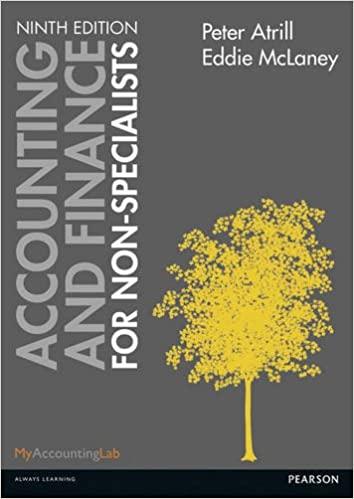


PROBLEMS: PROBLEM 1: TRUE OR FALSE 1. Under a consignment arrangement, the consignor recognizes revenue equal to the gross amount of the consideration in the contract. 2. Consigned goods are included in the consignee's inventory. 3. Costs of transporting consigned goods to the consignee's place of business forms part of the cost of the consignee's inventory. 4. An entity that merely arranges the sale of goods between a supplier and a customer is most likely acting as an agent. 5. Parrot Co. operates an online store where it sells the products of Biscuit Co. Under the contract between Parrot and Biscuit, Parrot buys the product of Biscuit after Parrot receives an order from an online shopper. Biscuit undertakes to deliver the goods directly to the customer. The customer pays through the website of Parrot at a marked-up price. Parrot then remits the payment to Biscuit at the contracted price, which is lower. Parrot does not keep any inventory of Biscuit products. The arrangement between Parrot and Biscuit implies a principalagent relationship whereby Parrot is an agent of Biscuit. PROBLEM 2: MULTIPLE CHOICE - THEORY 1. In a consignment arrangement, which party bears which type of risk? Inventory risk a. Consignor Credit risk b. Consignor d. Consignee Consignor Consignee Consignor Consignee 2 Which of the following indicates that an entity is a principal rather than an agent? a. Another party is primarily responsible for fulfilling the contract. b. The entity has no the discretion in establishing the price at which the good or service is sold to a customer. c. The entity ultimately bears the loss if the customer fails to pay the sale price. d. The entity does not have inventory risk. 3. ABC Co. produces a wide variety of frozen foods. Due to the faltering economy, ABC closed its provincial sales outlets. Instead, ABC outsourced various distributors to sell its products. Each distributor accepting delivery shall pay ABC 10% of the factory selling price of the goods delivered and accepted. However, if the distributor fails to sell all of the goods accepted before their expiration dates, ABC is obligated to repurchase the unsold goods. In June 201,ABC delivered goods with total factory selling price of P10,000,000 to its distributors. ABC received 10% of the total factory selling price of the goods delivered. When should ABC recognize revenue from the goods delivered? a. When the goods are shipped to the distributor. b. When the goods are sold to the ultimate customers. c. When the distributor pays ABCCo. d. When ABC received the 10% of the total factory selling price of the goods delivered. 4. Black Co., a consignee, paid the freight costs for goods shipped from White Co., a consignor. These freight costs are to be deducted from Black's payment to White when the consignment goods are sold. Until Black sells the goods, the freight costs should be included in Black's a. Cost of goods sold. b. Freight-out costs. c. Selling expenses. (AICPA) d. Receivable. 5. Entity A consigns goods to Entity B. Normally, end customers buy over-the-counter from Entity. B. However, in some cases, Entity B ships the goods to the customer. Entity B deducts the shipping cost from the amount remitted to Entity A. How should Entity A account for the shipping cost? a. Freight in c. Commission expense b. Receivable d. Freight out PROBLEM 3: EXERCISE Publisher Co. delivers 1,000 books to Bookstore Co. under a consignment arrangement. The cost per book is P300. Publisher Co. pays freight of P22 per book. Bookstore Co. is entitled to a 20% commission based on the Publisher's suggested retail price. However, Bookstore Co. marks up the Publisher's suggested retail price anyway for another 15%. Six (6) months after the end of the semester, Bookstore Co. remits P245,700 to the Publisher for the sale of 700 books, after deduction of P69,300 for the following: - 2% withholding tax based on the publisher's suggested retail price. - Bookstore's commission. Requirements: a. Compute for the amounts to be presented in Publisher's. statement of profit or loss? b. How much is the ending inventory to be presented in









